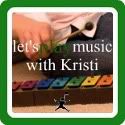How brain science relates to learning music
I’ve been a bit of a brain science junkie lately – listening to brain science podcasts, reading brain science books. It’s all so fascinating and often directly applicable to my life. I recently read “Brain Rules: 12 Principles for Surviving and Thriving at Work, Home and School” by John Medina. There is all this great brain research going on that we don’t hear about, or if we do hear about, it can get skewed by the media. As the author says in the book, “Unless you have the Journal of Neuroscience sitting on your coffee table, you’re out of the loop. This book is meant to get you into the loop.”
I think there are simple ways to apply his “brain rules” to children learning music. To find out more about “Brain Rules” visit brainrules.net! To find out more about Let’s Play Music visit letsplaymusicsite.com.
Rule #1 Exercise: Exercise boosts brain power (especially aerobic exercise). Studies show that exercise positively affects executive function, spatial tasks, reaction times and quantitative skills.
My take: Children should be physically active to learn better. Before coming to music class, how about encouraging your child to ride a bike around the block or kick around a soccer ball or something else to get the heart pumping? This will prime the brain to be ready to learn. Also, If you’ve ever been in a Let’s Play Music class, then you know we use physical movement a lot: “Johnny’s Haircut” anyone?
Rule #2 Survival: The human brain evolved, too. Our ability to understand each other is a chief survival tool. Relationships help us survive in the jungle and are critical to surviving at work and school today.
My take: Building good relationships with my students is worth the effort. I really come to love these children who I get to teach and have fun with each week. I want each of them to feel understood and be motivated to cooperate.
Rule #3 Wiring: Every brain is wired differently. Any experience you have creates new wiring in your brain. And no two people have the exact same experiences. Regions of the brain develop at different rates in different people.
My take: We can’t expect each child to learn music in the same way and at the same pace. We can make sure to celebrate their efforts and help children feel good about working towards a goal. It’s okay if every student doesn’t master a song or concept at the same time, as long as they are all making progress and trying.
Rules #4 Attention: We don’t pay attention to boring things. The 10-minute attention span: after an amount of time disappointing to teachers everywhere, audience attention drop precipitously. You must do something emotionally relevant at each 10-minute mark to regain attention.
My take: This is where the Let’s Play Music curriculum really excels. It takes into account the attention span of children by making activities interesting and physically moving around frequently, including having two learning spaces that we move back and forth between. We move quickly between activities, sing lots of fun songs, use actions to reinforce what we’re learning, use manipulatives, and engage each child in ways suited to their level. It’s fun for the teachers, students and even parents!
Rule #5 Short-term Memory: Repeat to remember. The human brain can only hold about seven pieces of information for less than 30 seconds! If you want to extend the 30 seconds to a few minutes or even an hour or two, you will need to consistently re-expose yourself to the information. Memories are so volatile that you have to repeat to remember. Improve your memory by elaborately encoding it during its initial moments.
My take: Let’s Play Music’s approach is brilliant in elaborately encoding information through full-body involvement, stories, music and games. Help your child remember even better by repeating the newest concepts at home.
Rule #6 Long-term Memory: Remember to repeat. It takes years to consolidate a memory. Not minutes, hours, or days but years. What you learn in first grade is not completely formed until your sophomore year in high school. How do you remember better? Repeated exposure to information / in specifically timed intervals / provides the most powerful way to fix memory into the brain. That interval seems to be 90-120 minutes after the initial learning occurred.
My take: Keep taking some kind of music lessons, so your child’s brain doesn’t think it’s okay to forget! When trying to remember the note names on the keyboard or staff or learning other concepts, practice them, then repeat after 90-120 minutes to increase retention of information.
Rule #7 Sleep: Sleep well, think well. Healthy sleep can indeed boost learning significantly. When we’re asleep, the brain is not resting at all. It is almost unbelievably active! It’s possible that the reason we need to sleep is so that we can learn. Also, napping is normal.
My take: Make sure your child is getting enough sleep. If a piece of music seems too challenging, practice as best you can, then sleep on it. While you’re sleeping, the brain is reinforcing the connections it made during the day. It will be easier the next day. Promise!
Rule #8 Stress: Stressed brains don’t learn the same way. Your brain is built to deal with stress that lasts about 30 seconds. The brain is not designed for long term stress when you feel like you have no control. Stress damages virtually every kind of cognition that exists. It damages memory and executive function. It can hurt your motor skills. The emotional stability of the home is the single greatest predictor of academic success. If you want your kid to get into Harvard, go home and love your spouse.
My take: As a teacher, I do not have control over the most significant factor in learning: the emotional stability of the home the child lives in. As parents, we have a greater influence than we may think in how our children learn. Let’s help our homes be happy places, free from conflict!
Rule #9 Sensory Integration: Stimulate more of the senses. Those in multisensory environments always do better than those in unisensory environments. They have more recall with better resolution that lasts longer, evident even 20 years later.
My take: Let’s Play Music utilizes so many of the senses in learning, it’s awesome! But how do I incorporate smell? I’ll have to think about that one.
Rule #10 Vision: Vision trumps all other senses. We are incredible at remembering pictures. Hear a piece of information, and three days later you'll remember 10% of it. Add a picture and you'll remember 65%.
My take: Let’s Play Music has so many great visuals, which is one of the reasons the students are able to learn advanced musical concepts at a young age. Parents can use visuals at home, too. Check out the ones in the Student Manual.
Rule #11 Gender: Male and female brains are different. Areas of the brain are bigger or smaller depending on gender. Whether this translates into behavior, we really don’t know.
My take: We may have different brains, but both males and females can learn to sing and play musical instruments. Music is for everyone!
Rule #12 Exploration: We are powerful and natural explorers. The desire to explore never leaves us despite the classrooms and cubicles we are stuffed into. Babies are the model of how we learn—not by passive reaction to the environment but by active testing through observation, hypothesis, experiment, and conclusion. Babies methodically do experiments on objects, for example, to see what they will do.
My take: Let’s Play Music utilizes children’s natural tendency toward exploration, including their preference for moving objects, strong facility for imitation, and ability to categorize. I also try to guide children in figuring out concepts themselves, instead of just telling them the answer.
As you can see, these brain rules apply directly to learning music and to our lives overall. Understanding how our brains work means we can work with our brains, instead of against them. You gotta love brain science!








No comments:
Post a Comment